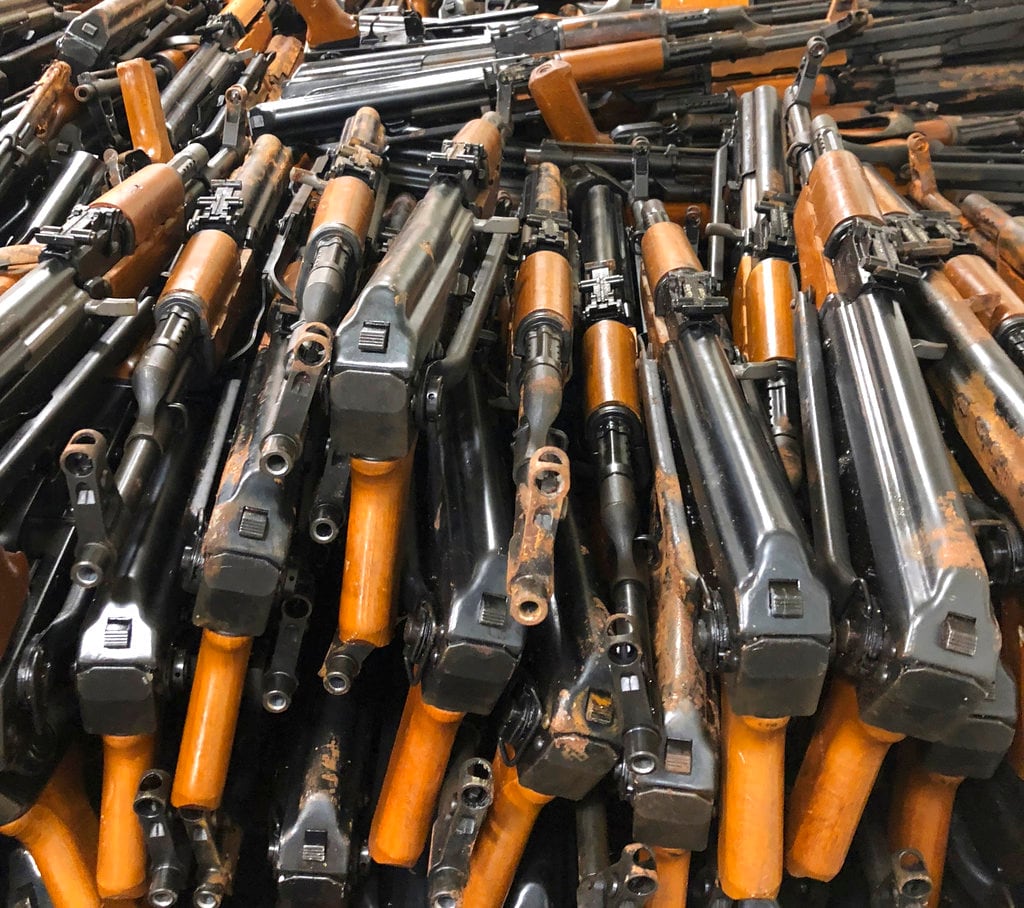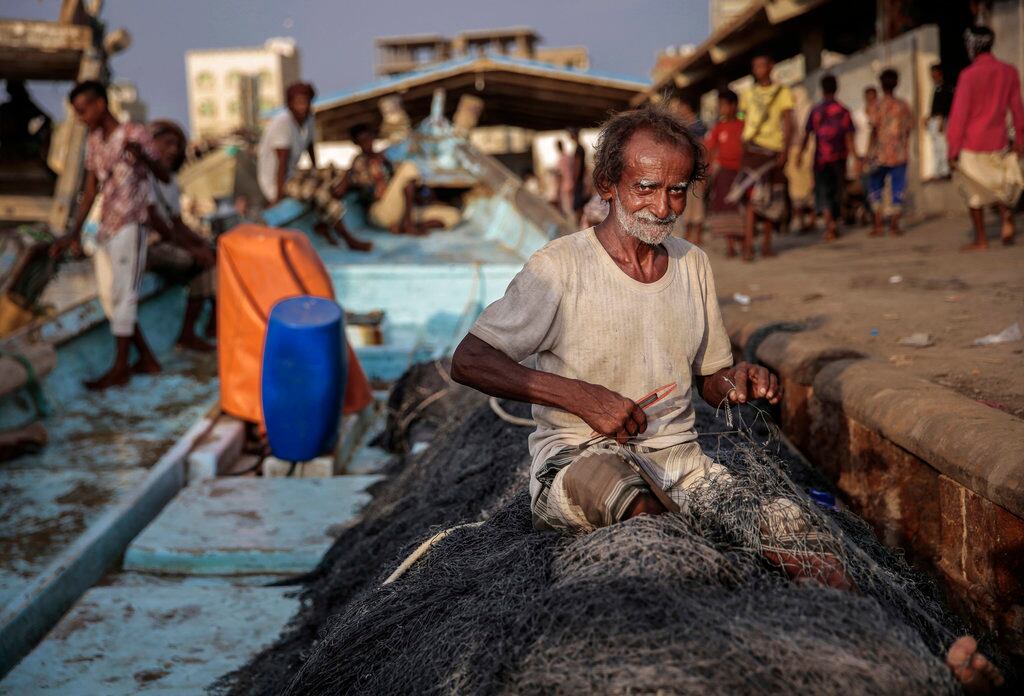ABOARD THE USS JASON DUNHAM, Persian Gulf — The huge pile of rusting AK-47 rifles is tucked into a corner below the deck of the Jason Dunham, serving as a grim reminder of how hard it is to catch weapons smugglers believed to be trafficking arms into Yemen.
On Thursday U.N. inspectors boarded the American guided-missile destroyer, to examine the more than 2,500 guns the crew seized in late August and determine if suspicions are true that the weapons originated in Iran.
U.S. officials have long accused Iran of smuggling arms across the waters to Yemen’s Shiite Houthi rebels, who have held Yemen’s capital, Sanaa, since September 2014. But they have only managed to seize a handful of weapons caches in recent years, underscoring the difficulties in tracking down arms smugglers working the vast waters around Yemen.
“It’s one big traffic corridor,” Vice Adm. Scott Stearney, commander of U.S. 5th Fleet, told reporters Thursday. “It’s not blocked, and it’s not just lines on a map that people don’t penetrate.”

Stearney declined to say if he thought Iran was responsible for the shipment, but he said the U.N. inspectors were experts on illicit weapons from Iran, Yemen and Somalia.
The Jason Dunham on patrol in the region noticed large bags being transferred from a dhow about 70 miles off the coast of Yemen and into a smaller skiff. A dhow is a traditional ship that commonly sails the waters of the Persian Gulf region. The Navy ship intercepted the skiff and, after talking to the crew on board, determined they were smuggling weapons.
The rifles, in bundles of four or five, were wrapped in plastic, then wrapped in Styrofoam and hidden in green burlap bags, according to Navy Cmdr. John Hamilton, commander of the Dunham.
On Wednesday, a small number of reporters were allowed to see the assault rifles, which were stained with rust after nearly two months at sea. The weapons had been unpacked and piled up, and were ready to be inspected the following day by the U.N. team.
Hamilton said the crew on the dhow initially told them they were carrying flour and wheat, but there was none of either on board.
RELATED

Navy Capt. Adan Cruz, commodore of U.S. Naval Forces Central Command, said it was likely the weapons were being shipped from Somalia to Yemen, but that’s still not proven. The U.N. inspectors, he said, will determine the guns' origin and "see first-hand the weapons flowing into the region.
The U.S. has repeatedly condemned Iran for arming the Houthis, a claim Tehran denies. Last December U.N. Ambassador Nikki Haley displayed missile remnants recovered in Yemen at a military base in Maryland, saying they were "undeniable evidence" of Iran's illicit activity. One large segment, she said, was launched at the international airport in Riyadh, Saudi Arabia
Since 2015 Saudi Arabia has led a coalition of Arab nations backing the Yemeni government against the Iran-aligned Houthi rebels. Saudi-led airstrikes have hit schools, hospitals and wedding parties and killed thousands of Yemeni civilians. The Houthis have fired long-range missiles into Saudi Arabia and targeted vessels in the Red Sea.




